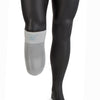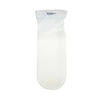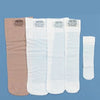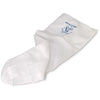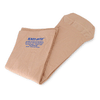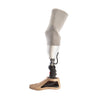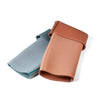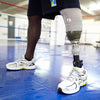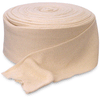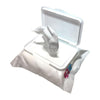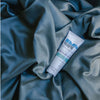How to care for your scars.
How Scars Are Formed
They're often thought of as unsightly imperfections, but scars are actually an incredible example of the body's ability to repair itself. Scars don't form after shallow cuts or scrapes, but deep cuts into the dermis layer of the skin (the middle layer) trigger a process called cicatrisation, the creation of fibrous scar tissue from the newly formed granular tissue. Your body needs three to six weeks to repair a deep cut, which it does by producing a protein called collagen at the site of the wound. As your wound gradually heals, it generates new granular skin tissue, which forms at the edges of the wound and works it way to the center. This tissue eventually covers the entire lesion, making a scab. When the wound underneath has sealed itself with another layer of new skin the scab falls off naturally. The resulting scar tissue isn't like normal skin tissue. It doesn't have sweat glands or hair growing from it, and it's more sensitive to the sun's UV rays.
The way skin heals and scars depends on the individual -- their skin type and condition, and how well they care for it. Both what you do to care for the skin as it heals and how you treat the scarred area afterwards will affect the scar's appearance. The Amputee Coalition has a guide for wound management that will help you to aid your body's natural healing process and to reduce the risk of infections in the weeks and months immediately following surgery.
Types of Scars
The most common scars are flat and whitish, usually following an everyday injury or a minor burn. Keloid scars, formed when scar tissue grows past the site of the wound, are more unusual. The kind of scar that forms following an amputation is typically raised, also called a hypertrophic scar. Raised scars result from an overproduction of collagen that happens in response to damaged skin. Raised scars may flatten over time, but even after the wound is healed it can take years for the scar to settle into its permanent appearance. Certain treatments can help this process along, but some scars may require medical or surgical attention.
Scar Treatments
Once your wound has healed, you'll probably want to make scar minimization a part of your regular skin care routine. There are many products and medical procedures that can help new scars heal better and make old scars less noticeable.
Raised scars can be flattened to some extent by using a silicone-based scar treatment gel on a daily basis. Applying a silicone-based scar treatment gel or serum with skin-healing ingredients and antioxidants such as quercertin twice a day will make your scar less noticeable in about eight weeks.
Some amputees prefer silicone gel sheets, such as Gel-Care Self-Adhesive Gel Sheets. The gentle cushioning of the gel relieves the painful itching and burning sensation that often occurs while wounds heal. However, you should watch out for scar gels that are principally made of silicone. Although pure silicone can help heal and reduce scars, silicone alone isn't all the skin needs. A product with a balance of skin-healing, skin-repairing, and anti-inflammatory ingredients will get much better results because it's working with the skin's naturally occurring repair process.
Finally, remember to be gentle with your skin! When not wearing your prosthesis be sure to protect the scar from the sun with sunscreen rated SPF 25 or greater.














































